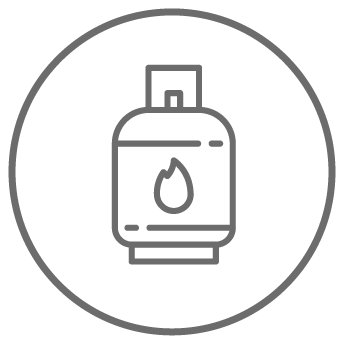Industrial refrigeration - Origins, history and gases used

Refrigeration is the process of lowering the temperature of a room or container below the outside temperature by subtracting heat. In line with Paris’s First Law of Food Degradation, refrigeration does not stop food spoilage, but has great importance in modern industry and in particular in:
- Food industry to preserve food
- Air conditioning of buildings
- Medicine and biology for sample preservation and some therapies
- Research laboratories for superconductivity experiments, vacuum systems etc.
- Astronomy for cooling CCD and CID sensors in telescopes
History of industrial refrigeration
Modern air conditioning has been around for just over 100 years, but the concept of refrigeration is older and has been known for a long time. As early as 1750, Benjamin Franklin experimented with using ether in a vacuum to create a cooling effect. Air conditioners, refrigerators and refrigerant gases have evolved over the years. Let us take a brief look at the stages of this history of the refrigerant from its first use to the present day.
The first mechanical air conditioner dates back to 1902, when toxic and flammable gases such as ammonia and propane were used as refrigerants. It was not until the 1920s that the hazardous nature of these fluids led manufacturers to bring new, safer refrigerants onto the market. These include chlorofluorocarbons, or CFCs, which are used because they are non-flammable and are given numerical names according to their chemical compounds.
CFC refrigerants were used extensively by the air conditioning industry until the 1970s, when it was realised that they had a heavy impact on the environment. The gases entered the atmosphere, where the sun's rays broke chemical bonds allowing chlorine atoms to act as catalysts to break down ozone and oxygen molecules. This damages the ozone layer with chlorine being trapped in the atmosphere.
This is why the refrigeration industry has gradually abandoned the use of CFC refrigerants in favour of hydro chlorofluorocarbons (HCFCs) and hydrofluorocarbons (HFCs). However, these compounds are not without their environmental hazards, which is why a new efficient and sustainable refrigerant with a very low GWP - global warming potential - has recently become popular, the R32 gas.
Settala Gas refrigerants
Settala Gas has been producing and selling hydrocarbon refrigerant gases under the PURI|FRIFOR brand for over 40 years. These are sustainable refrigerant gases with 99.5 % purity and no impact on the atmosphere. The gases offered by Settala Gas are also more efficient and less expensive than others used in industrial and domestic refrigeration such as HCFCs/HFCs.
The gases in the PURI|FRIGOR line have better energy performance and low environmental impact and are therefore recommended for use in refrigeration. These include propane, n-butane and isobutene hydrocarbons and their blends. Today the refrigeration industry is essential and Settala Gas is the industry benchmark for refrigerant gases. Contact us to learn more!




